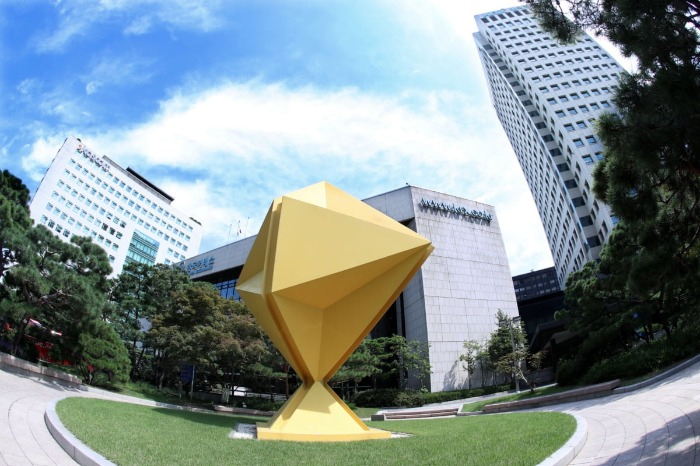Korean stock market
Kospi posts record-high performances in 2021
Transport, chemicals and steel indices led the achievement, but growth is slowing from Q1 2022
By Apr 04, 2022 (Gmt+09:00)
3
Min read
Most Read
LG Chem to sell water filter business to Glenwood PE for $692 million


Kyobo Life poised to buy Japan’s SBI Group-owned savings bank


KT&G eyes overseas M&A after rejecting activist fund's offer


StockX in merger talks with Naver’s online reseller Kream


Mirae Asset to be named Korea Post’s core real estate fund operator



In 2021, the 595 firms on the Kospi achieved 2.3 quadrillion won ($1.9 trillion) of sales on a consolidated basis, up 19.82% from the previous year. Their combined operating profit jumped by 73.59% to 184 trillion won, and net profit soared by 160.56% to 156.6 trillion won, according to the Korea Exchange (KRX) and Korea Listed Companies Association (KLCA).
Excluding Samsung Electronics Co. making up 12.16% of the main bourse, the Kospi-listed firms’ annual sales, operating profit and net profit respectively increased by 20.06%, 89.09% and 246.36%. “As most of the companies are exporters, they benefit from surging global consumption in the early stage of the global economic recovery,” said Jeong Myung-ji, head of investment and research at Samsung Securities Co.
The Kospi saw sales hikes in all its 17 indices, and the medical precision index, which includes medical test kit firms like SD BioSensor Inc., posted the highest sales growth rate of 45.68%. The transport & storage index, which has Korea’s top container line HMM Co. and flag carrier Korean Air Lines Co., saw a 33.2% increase in sales. The steel & metal, chemicals, electrical & electronic indices also stood out, achieving sales increases of 32.58%, 30.17% and 22.21%, respectively.
By operating profits, transport & storage posted the highest increase of 569.57%. The chemical followed with 351.25%, and steel & metal, textile and wearing apparel, services respectively posted 268.63%, 118.94% and 81.69%. On the other hand, the electricity & gas index had an operating loss as the government and Korean power utility KEPCO Co. froze electricity rates last year. The construction index also saw a 4.34% decline in operating profit.
PRESSURED BY STRONGER DOLLAR, COST INCREASES
The secondary bourse Kosdaq also posted robust performances. The aggregate sales of the 1,048 Kosdaq firms was 218.5 trillion won in 2021, 18.28% up from the previous year. The combined operating profit of the companies was 16.6 trillion won, up 49.66%. Their net profit soared by 170.96% to 13.4 trillion won last year.
The Kosdaq-listed companies’ profitability and financial solvency also improved. Their operating profit-to-sales rose by 1.17% to 7.62%, and the net profit to sales increased by 3.45% to 6.13%.
According to financial data company FnGuide, 183 Korean companies, the performances of which are estimated by at least three securities firms, posted a 16.07% hike in sales and a 1.58% increase in operating profit during the first quarter of 2022, compared with the same period of 2021. Over the same period, net profit is estimated to decline by 30.98%. The records show steep declines from the first quarter of 2021, when the sales, operating profit and net profit increased by 9.08%, 131.73% and 361.04%, respectively. “The stronger dollar and hikes in raw materials and logistics costs will pressure Korean exporters’ performances,” Jeong said.
Write to Sung-Mi Shim at mshim@hankyung.com
Jihyun Kim edited this article.
More to Read
-
 Korean stock marketMid-cap, small-cap outperform large-cap stocks in Q1 2022
Korean stock marketMid-cap, small-cap outperform large-cap stocks in Q1 2022Apr 01, 2022 (Gmt+09:00)
2 Min read -
 Korean stock marketKorea reopening stocks rally as govt. eases COVID-19 restrictions
Korean stock marketKorea reopening stocks rally as govt. eases COVID-19 restrictionsMar 11, 2022 (Gmt+09:00)
3 Min read -

-

-
 Year-end reviewKosdaq: Perennial bush league as blue chips favor Kospi
Year-end reviewKosdaq: Perennial bush league as blue chips favor KospiDec 28, 2021 (Gmt+09:00)
3 Min read
Comment 0
LOG IN


